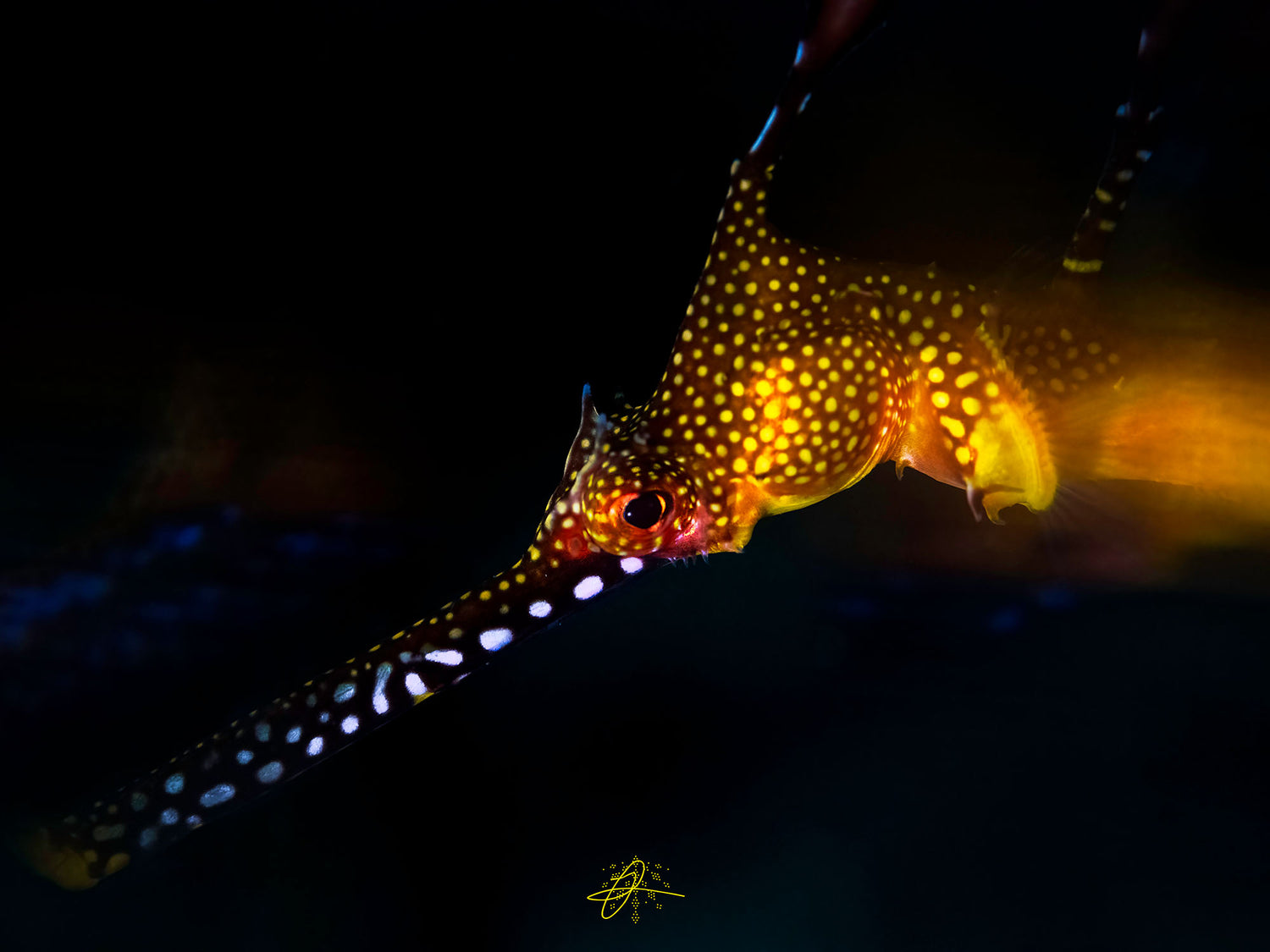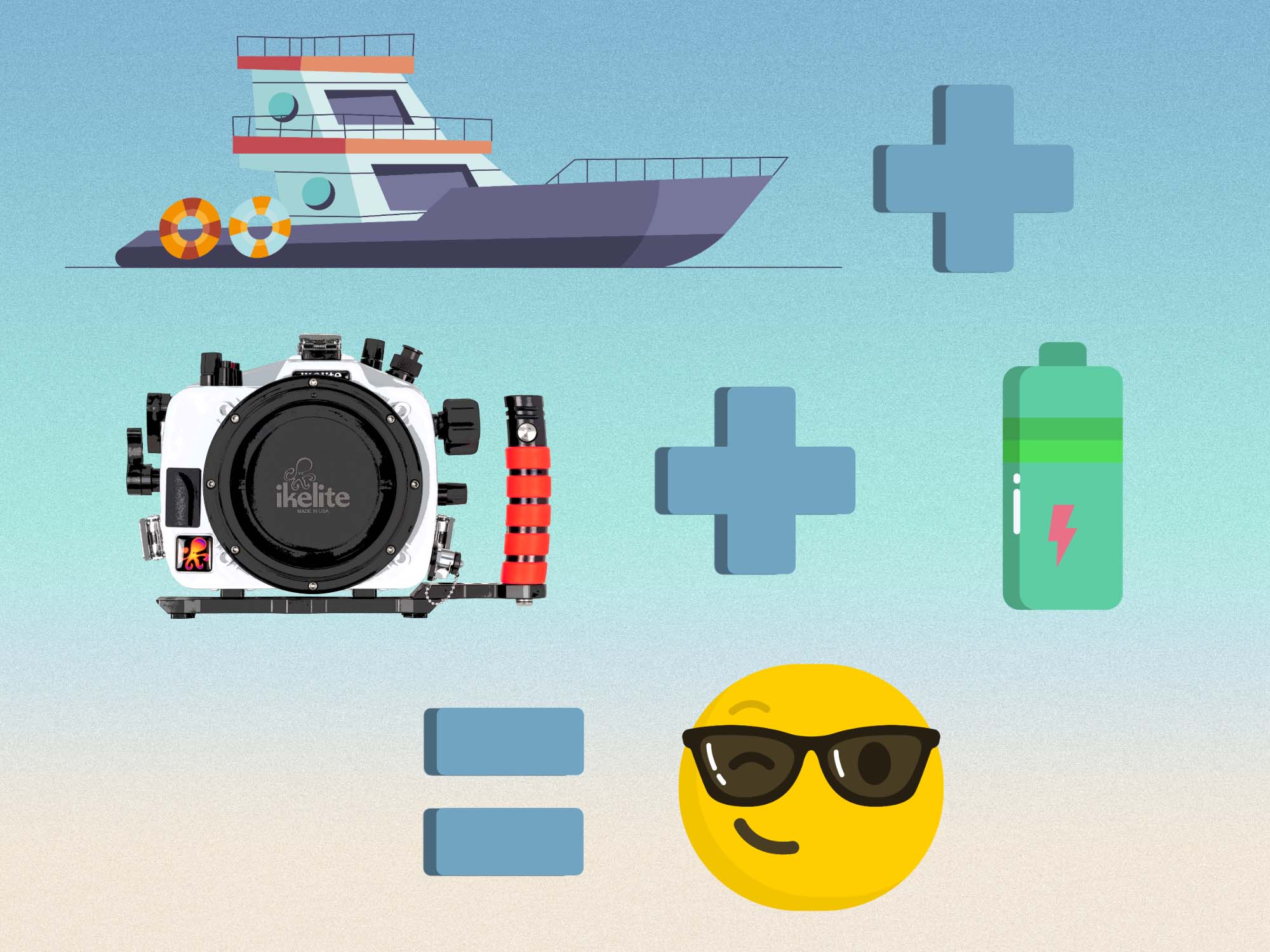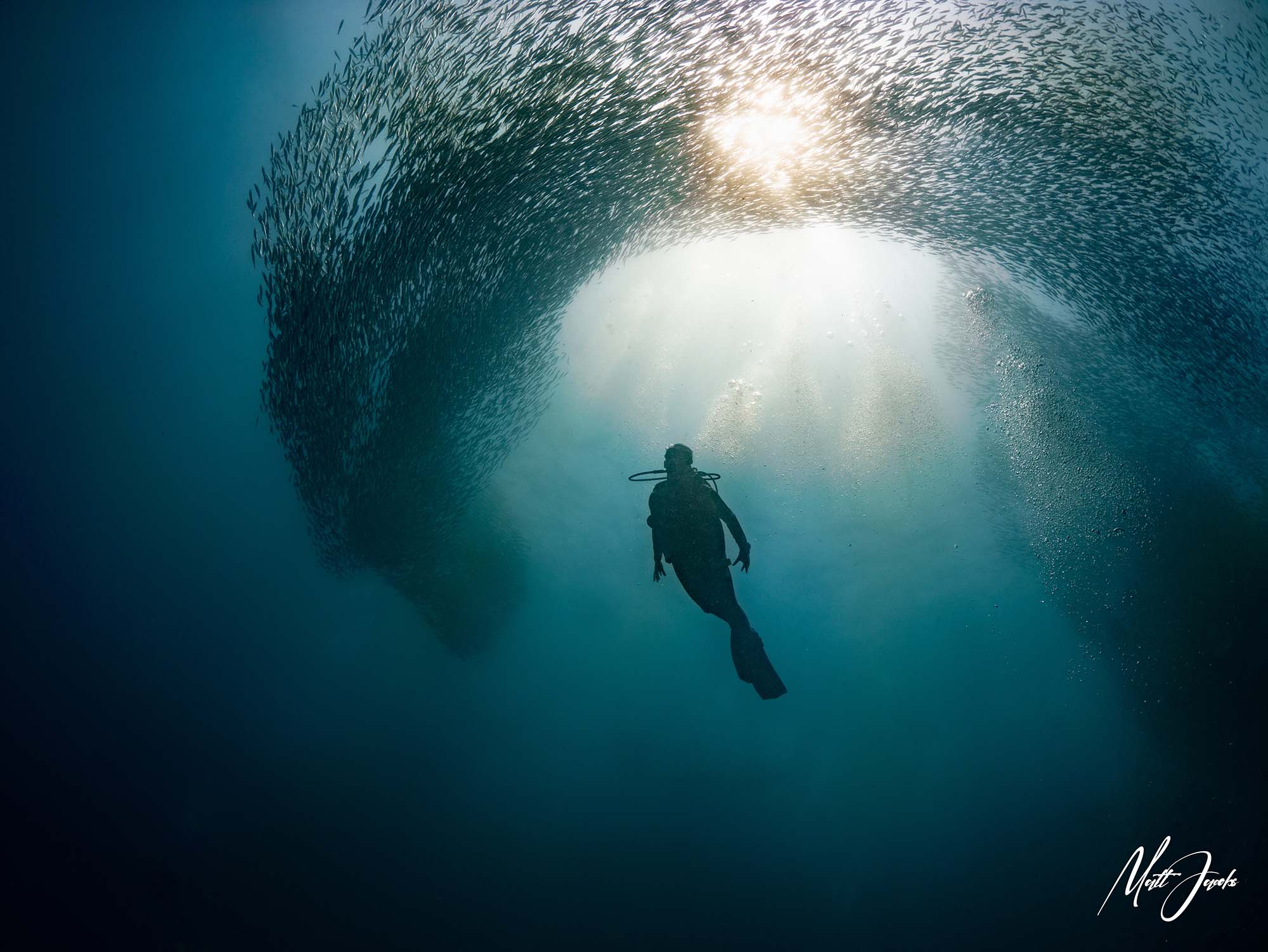By James Graham
“Look at nature carefully – really pay attention – and if you’re lucky, you might just catch a glimpse of something deeply hidden.”
-Albert Einstein
This quote has become something of a personal mantra that I always try to apply to my work, with the intention of creating more interesting and meaningful Underwater Macro Photography & Videography.
Today I am not going to discuss any specific techniques, you can find some excellent articles here on Ikelite’s website, but we will rather explore the varied benefits of diving deep into the world of Underwater Macro, studying marine ecosystems and habitats, and why having a Macro mindset stretches far beyond the focal length.
So, let’s start at the beginning… what is Macro?
By definition, Macro is an extremely unforgiving focal length with an aspect ratio of 1:1. That is to say that at the lens’ minimum focal distance, an animal that is one centimetre wide will fill one centimetre width of the camera’s sensor.
Now imagine that you are trying to isolate focus on that animal’s eye. If you miss focus by just one millimetre too long or too short, you will not only miss focus on the eye, but more likely the entire animal. It is an unforgiving hurdle to overcome, and one that will put a lot of people off in the first instance, but I can attest that once you learn the fundamentals then it will become a lot more intuitive, to the point that you can begin ‘seeing’ the composition before even lining up your shots.
Some professionals are able push this aspect ratio even further – into the realms of Super-Macro – using tools such as diopters, teleconverters, or even software to achieve greater magnification. But to put things plainly, these are all levels of magnification beyond what the human eye can see.
Knowing your subjects' habits and habitats will make spotting them much easier. Tubular Hydroids, pictured here, are host to a number of macro creatures like miniature marine Ladybugs, Skeleton Shrimps and Nudibranchs. © James Graham
Hidden Worlds
I picked up my first Macro lens around three years ago, and can safely say that I am hooked for life. There are simply more animals in Macro dimensions than can be photographed in a lifetime, so I am here to tell you that there is an entire universe of undocumented Macro subjects waiting at your local dive site, and there is no better time than right now get out there and explore.
While Nudibranchs are widely considered to be the poster-child for Underwater Macro, there are seemingly infinite opportunities at this focal length. For Nudibranchs specifically, what fascinates me more than anything else is their complex relationships with other organisms.
They can be very fussy, with a preference for specific living conditions, or availability of very unique resources. These requirements will then trickle down to their parasites, which may live exclusively on the Nudibranch’s skin, and so you can imagine how the scarcity of these animals begins to increase by orders of magnitude.
If, for example, you are hoping to find the miniature marine Ladybugs, Skeleton Shrimps and Nudibranchs presented in the above video, you will greatly improve your chances by identifying their ideal host; Tubular Hydroids.
By understanding each species’ behaviours, preferences or dependencies – which may vary dramatically between day and night, at different depths, or different times of the year – you will be in a much better position to find what you are looking for. Depending on the species you are chasing, they may exist nowhere else on the planet, and so you may be gifted with an opportunity to make both a scientific contribution or behavioural observation, as well as to create something unique and beautiful.
To demonstrate just how fleeting these moments can be, it breaks my heart to inform you that this patch of Hydroids and the entire surrounding reef structure perished back in January 2023, just four months after filming them in full bloom. It is likely that due to a prolonged period of rainstorms in the area, this dive site was reduced to rubble by a fatal combination of naturally occurring sedimentation, erosion and acidification, as well as some not-so-natural human waste, debris and pollutants. The reef is yet to recover.
Leafy Seadragon, Southern Australia. © James Graham
Artistic License
Crazy or stupid, I wholeheartedly believe that given the right conditions, there is no subject too large to approach with a Macro mindset. By isolating small sections of your subject and emphasizing specific details, you are limited only by the boundaries of your lens’ focal length.
I recently filmed the above ‘pregnant’ male Leafy Seadragon in South Australia to demonstrate this concept, and created a storyline that really honed in on the details of his little world.
He is fully grown, at around 30cm in length from head to tail, and knowing that my 90mm Macro lens would be too tight for the Master Shot, I chose to isolate sections of his body to build out the composite parts of this sequence; his incredible crown of leaf-like appendages, the parasitic isopod that has evolved to imitate the complexion of his skin, his brood of eggs, and even a hatchling that is ready to fledge.
Shooting with this detail-oriented mindset really encourages you to study the marine ecosystem and its inhabitants as a whole, rather than waiting for individual animals to turn up out of the blue.
Moving down into the realms of ‘true’ Macro subjects, you will be able to find some of the most vibrant displays of colour in the natural kingdom, with intricate textures, complex shapes, and all of the wonderfully alien features that are allowed to develop in the weightlessness of the Ocean. Up is down and the walls are the floor. Gravity is just an optional extra down here, and with the right subjects in mind, you will be able to experiment with a wide variety of compositions, lighting, angles, and exposure techniques.

“In the end, we will conserve only what we love, we will love only what we understand, and we will understand only what we are taught.” Baba Dioum
Environmental Awareness
This philosophy would go on to become the blueprint for wildlife conservation efforts in the early 70’s, by identifying ‘icon’ species, where one symbolic animal would be used to represent the plight of each ecosystem.
It continues to be very effective today, as one of our most predictable ‘human’ traits is that we are far more likely to empathise with cute and cuddly Pandas for example, than their parasitic intestinal roundworms. While both animals are busy performing their individual roles in the balance and biodiversity of the ecosystem, I doubt we will see any “save the intestinal roundworm” campaigns any time soon. Conservation efforts and animal rights policy therefore continue to be something of a beauty pageant, and why ‘ugly’ animals are so often afforded the least protections.
This is why I believe the Underwater Macro community has such an important role to play, and where the most significant opportunities for change can be found.
If we can shine a spotlight on the tiny inhabitants of the underwater world, which are collectively so critical to the health of our planet, then we might stand a chance at saving them. I sincerely believe that if we can create more relatable narratives of even the most alien of marine species, then people will be more likely to empathise, and ultimately help to save them.

Have Fun
I grew up shooting my dad’s hand-me-down 35mm film camera; a Ricoh KR-10 Super and “nifty fifty” kit lens, which I quickly became infatuated with. This was, and still is, an incredibly capable Sears catalogue SLR from the early 80’s, which my parents had originally purchased with the intention of capturing family memories while my sister and I were growing up.
This camera is now one of my most prized possessions and holds sentimental value beyond what is required for the purpose of this article, but the reason I mention this is to really consider what you enjoy about using your camera. Whether it be photography, videography, freediving, scuba, wide-angle, macro, sharks, shrimps, or whatever else, just remember that you are the most important person on this journey and the camera is just one of the many tools that can be used to fulfil your creative objectives.
I love trying to capture scenes that most accurately reflect the complexity of life-supporting ecosystems such as Coral Reefs, and more recently have become obsessed with symbiotic relationships, parasites and their hosts. I particularly enjoy trying to figure out the extent to which each animal benefits from the other, why these behaviours might have developed in the first instance, and how many millions of years ago did it all begin. I love to ponder the natural history of our planet and it’s pre-historic inhabitants, and often wonder what creatures are yet to be discovered in the deepest, darkest fathoms of our Ocean.
Using a Macro lens, for all of its challenges and limitations, has unlocked parts of my brain that I would otherwise never have been able to access. It has (at least in part) helped me to look much deeper into the hidden world of the Micro-verse, and led me on a journey of exploration and discovery that I would never have imagined only a few years ago.
So go out there and give it a try, and remember to always look carefully – really pay attention – because you might just catch a glimpse of something very special indeed.

Gear Selection
The capabilities of modern cameras, and the incredible advancements from underwater housing companies such as Ikelite, have given us the tools needed to promote the the lesser-known Macro inhabitants of the reef with a view towards creating more ‘icon’ species.
Ikelite offers a range of camera housings, ports, and accessories to help you lean into your desired niche, and I have been using their products for over six years.
The two videos mentioned in this article were both captured using the Sony A7RV body and Sony 90mm f/2.8 Macro lens, housed inside the Ikelite 200DL Housing and DL Macro Flat Port, with 42mm and 20mm port extensions.
I use several different lighting options depending on the subject, but prefer to use a strong down-light with an ambient secondary side-light, with the intention of imitating consistent ng light at any depth, whilst balancing out the shadows.
I also enjoy using the DL 5 Inch Flat Port for Macro photography, as I can attach filters inside the housing rather than relying on wet lenses. This enables me to trial different combinations of colour filters and diopters, depending on the style I am trying to achieve.
Thank you so much for reading, and please feel free to get in touch!
 James Graham is an Australian photographer, videographer, divemaster, and animal researcher. For the last decade James has taken his life-long passion of photography underwater where he's honed the craft of macro photography. Check out his latest underwater macro videos on Instagram @withgraham, visit his website www.with-graham.com, or connect with him via email: withgraham@hotmail.com
James Graham is an Australian photographer, videographer, divemaster, and animal researcher. For the last decade James has taken his life-long passion of photography underwater where he's honed the craft of macro photography. Check out his latest underwater macro videos on Instagram @withgraham, visit his website www.with-graham.com, or connect with him via email: withgraham@hotmail.com
Additional Reading
Featured Customers | James Graham The Marvels of Macro
Macro Close-Up Underwater Camera Settings
Sony FE 90mm F2.8 Macro G OSS Review and Results
Go Small or Go Home: Macro Photography in the Philippines
Maintaining Your Macro Eye | Using Underwater Techniques on Land
Colors in Cold Water: 6 Tips for Shooting Macro in Southern California













